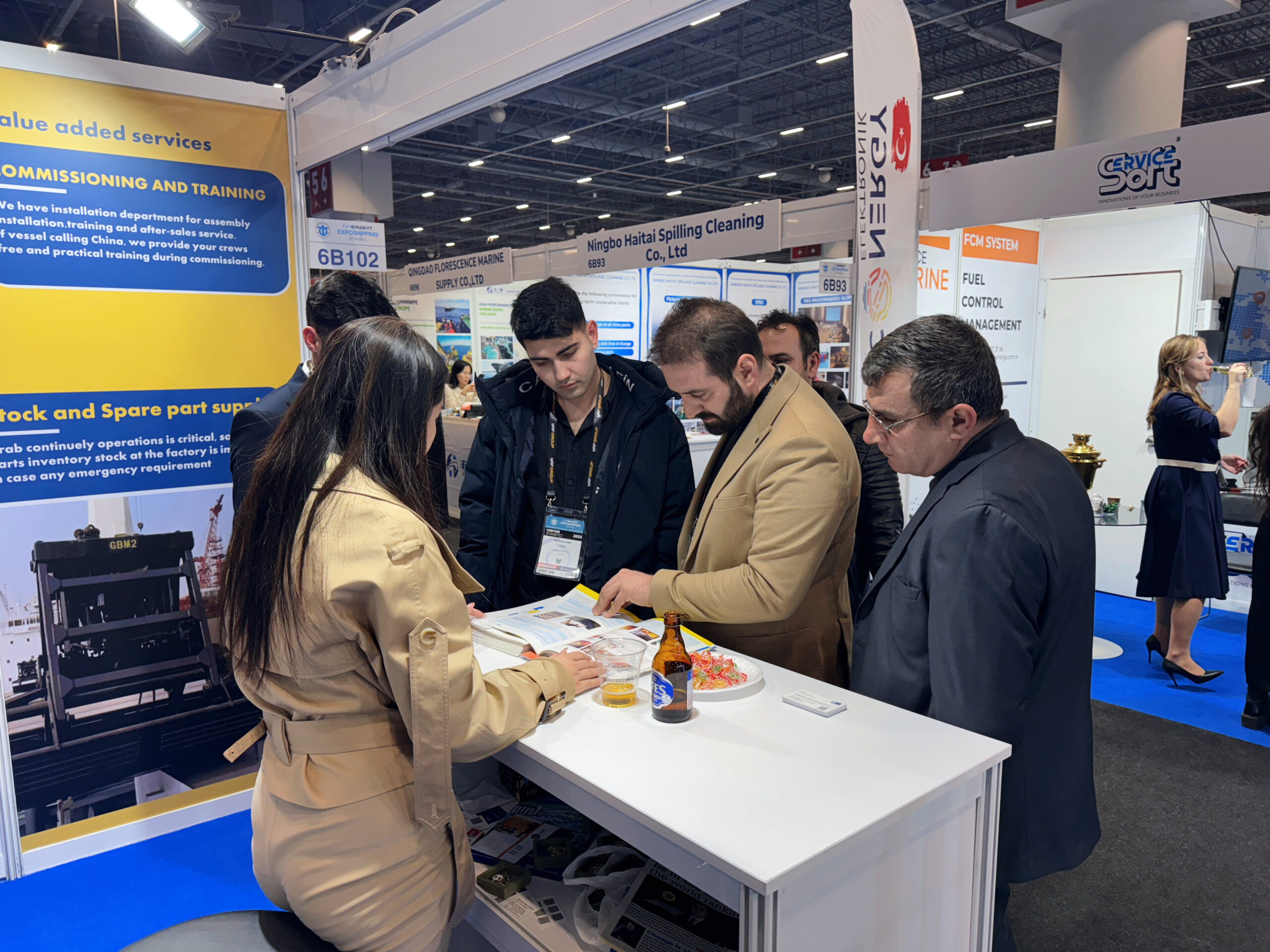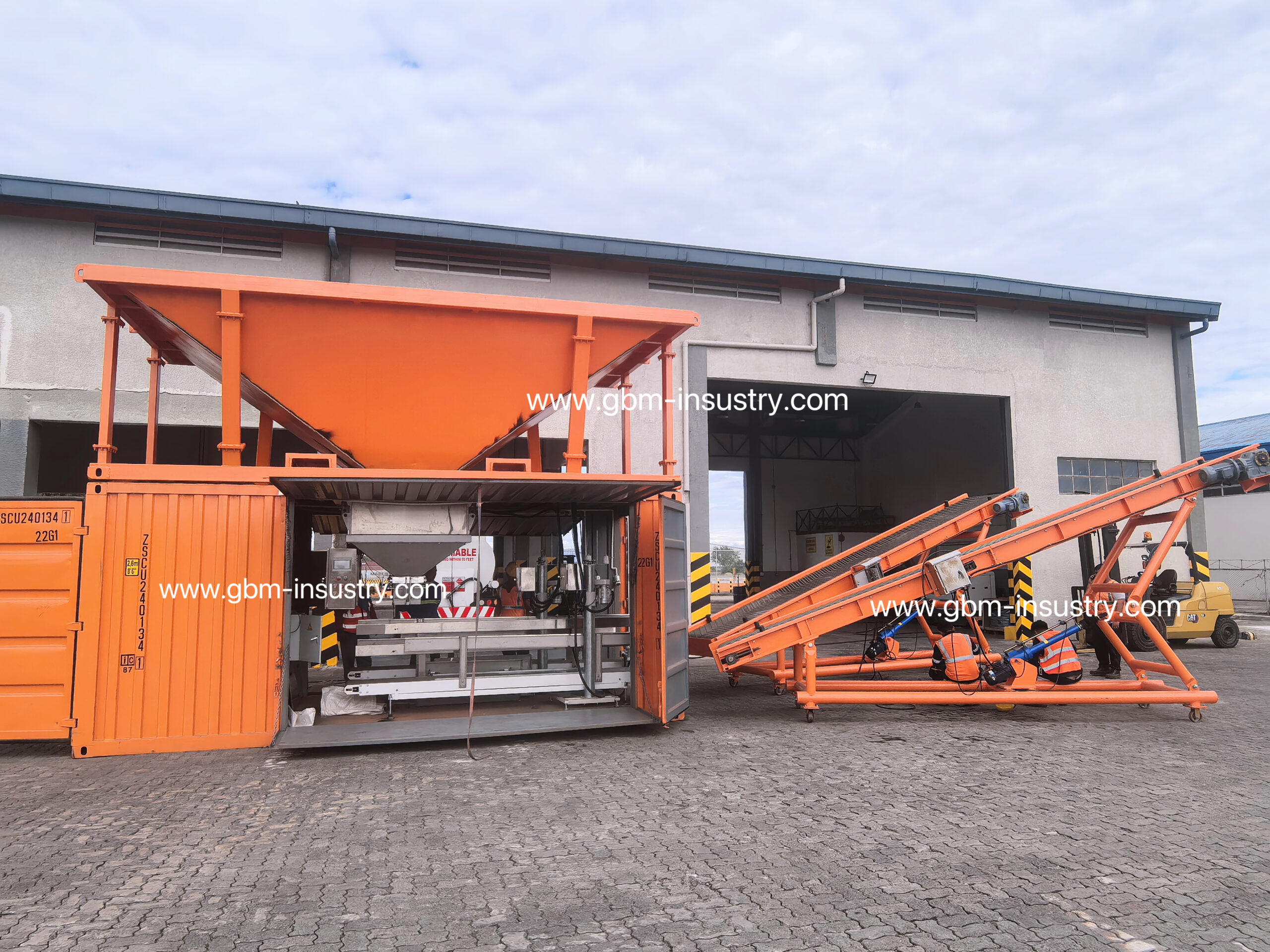The Development History of Container Ship Size Increase
In April 1956, the world’s first container ship was officially put into operation by the Pan-Atlantic Steamship Company in the United States, marking the beginning of the container shipping era. Since then, container ships have been favored by major shipping companies worldwide due to their unmatched advantages over general cargo ships, including larger cargo capacity, higher loading and unloading efficiency, lower cargo damage and loss rates, and lower operational costs.
In the 1970s, with the opening of major east-west routes such as Asia-Europe and the Pacific, as well as north-south routes like Asia-Australia and Asia-Africa, container shipping entered a phase of development, with vessel sizes increasing to around 2,000 TEU. In the 1980s, to fully utilize the Panama Canal’s navigation capacity to meet the needs of global routes, 3,000 TEU Panamax container ships with a beam of 32.2 meters debuted in the shipping market.
In 1988, the 4,340 TEU “President Truman” container ship, built by American President Lines, entered service. With a beam exceeding the maximum width allowed by the Panama Canal, it marked the beginning of the post-Panamax era for container ships. In the late 1990s, fifth-generation container ships with a capacity of over 5,000 TEU, sixth-generation container ships with a capacity of over 6,000 TEU, and 7,000 TEU container ships were successively put into operation, with the pace of container ship enlargement significantly accelerating. By the end of 2005, container ships with a capacity of over 8,000 TEU had gradually become the main ship type for ocean transport.
In 2007, Maersk Line’s 11,000 TEU “Emma Maersk” container ship entered service, marking the official arrival of the 10,000 TEU-class container ship era. From January to August 2011, a total of 52 ultra-large container ships with a capacity of over 10,000 TEU were ordered globally, while only 10 were ordered in the entire year of 2010. By the end of 2011, the largest operational container ship was 14,770 TEU, and the largest under-construction container ship was 18,000 TEU. This clearly demonstrates the growing trend toward larger container ships.
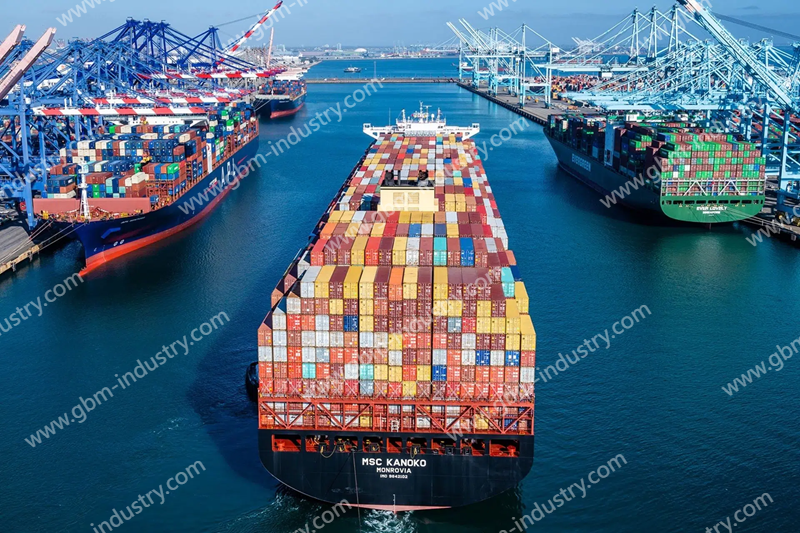
Impact of Container Ship Size on the Shipping Industry
Impact on Ports
Water Depth
As container ships continue to grow in size, the requirements for port water depth are becoming increasingly stringent. For example, the draft of a 2,000 TEU container ship at full load is 10.0 meters, while the draft of a mainstream 8,000 TEU container ship at full load is 14.5 meters, and the draft of a 14,000 TEU container ship at full load is 17.0 meters. The water depth at the Yangshan Deepwater Port Area of Shanghai Port is 17.0 meters, which generally meets the berthing requirements for ultra-large container ships; however, the water depth at the Waigaoqiao Port Area of Shanghai Port is only 10.0 to 12.0 meters, meaning that large container ships must either reduce their load or wait for the tide to enter or exit the port area. Additionally, the Yangtze River Estuary North and South Channels of Shanghai Port require significant dredging expenses annually to meet the water depth requirements of vessels.
Infrastructure
The trend toward larger vessels imposes higher demands on port infrastructure such as cargo handling equipment. For example, a 14,000 TEU container ship has a width of 56 meters and can carry 22 rows of containers on its deck. However, some major ports still have gantry cranes with outreach distances of less than 50 meters, which cannot meet the cargo handling requirements of 10,000-TEU-class container ships.
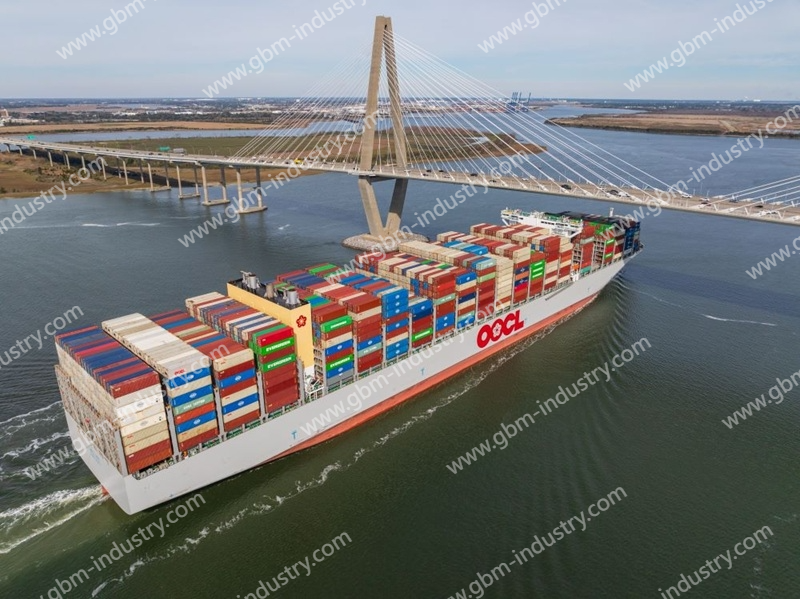
Loading and Unloading Efficiency
Shipping companies use large container ships to leverage cost advantages, reduce port stay times, and achieve economies of scale, which requires ports to efficiently complete vessel loading and unloading operations. Currently, the world record for container terminal handling was set by the Yangshan Deep-Water Port Area of Shanghai Port in 2008, averaging 850.53 natural containers per hour, while the record for single-crane container handling was set by Ningbo Port in 2011, averaging 185.89 natural containers per hour; However, in actual operations, the hourly container handling volume at terminals typically ranges between 150 and 200 TEU. Calculating based on handling 160 TEU per hour, a 12,000 TEU container ship would require approximately 3 days to unload 6,000 TEU and load 6,000 TEU at the port; If the vessel must wait for the tide to enter or exit the port, the vessel’s port stay time will be longer, resulting in significantly increased operational costs.
To address this, ports have actively explored effective measures to improve handling efficiency in recent years:
(1) Adopting dual-lift gantry cranes, but the current adoption rate of such cranes is low;
(2) Optimizing operational processes, such as loading containers simultaneously while unloading them from trucks, but this requires a high level of port information control system capabilities;
(3) Adopting dredged berths, where container ships can berth on both sides of the terminal simultaneously, but this loading and unloading process requires significant upfront investment.
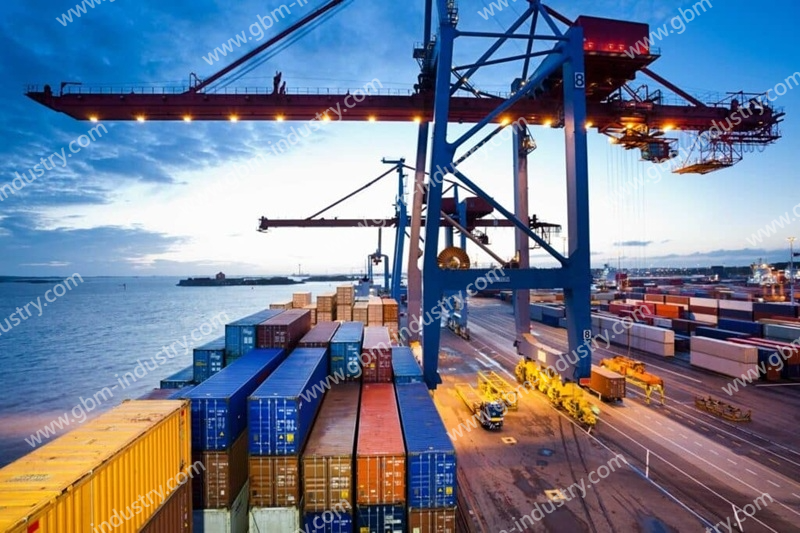
Feeder Transportation
While the trend toward larger vessels has brought significant container volumes to ports, it has also posed severe challenges for port feeder transportation. Currently, port feeder transportation in China is primarily carried out via road, waterway, and rail transportation modes. Although China has invested substantial human, material, and financial resources in recent years to improve port logistics infrastructure, issues persist due to planning and construction constraints, thereby limiting the development of container transportation. Taking the Port of Shanghai as an example, despite its leading global container throughput, traffic congestion on roads remains severe, and container truck congestion has not improved significantly over the long term.
Therefore, the following measures are recommended:
(1) Fully leverage the advantages of water-water transshipment to encourage goods along the Yangtze River to be transported via waterways;
(2) Accelerate the development of sea-rail intermodal transport to strengthen transportation connections between coastal container hub ports and central and western regions;
(3) Improve urban master planning to increase road traffic capacity.
Impact on shipping companies
Route investment
Container liner shipping is a “four-fixed” service (fixed route, fixed port, fixed schedule, and fixed time), requiring significant upfront investment. Taking the Asia-Europe route as an example, a weekly route typically requires nine vessels, with a single round-trip cycle taking 63 days. As the size of deployed vessels continues to increase, route investment has also risen significantly, leading to heightened financial pressure on shipping companies.
Port Calls
Due to water depth restrictions, large container ships have relatively few port calls. For example, China Ocean Shipping’s Europe Line 1 (AEX1) only calls at major ports such as Shanghai, Ningbo, Yantian, Felixstowe, Hamburg, Rotterdam, and Hong Kong. Additionally, due to the substantial upfront investment required for large container ships, shipping companies strive to minimize the number of vessels deployed on routes. Taking the Asia-Europe route as an example, originally, nine vessels were required to complete a single round-trip voyage in 63 days; after reducing the number to eight vessels, the voyage time was shortened to 56 days, necessitating a reduction in the number of port calls.
Loading and Unloading Volume
Due to the increased container capacity of large container ships and the reduction in the number of ports called at, the loading and unloading volume at each port has increased. Taking the Asia-Europe route as an example, a 6,000 TEU container ship has a maximum loading and unloading capacity of 12,000 TEU. When calling at 8 ports, the average loading and unloading volume per port is 1,500 TEU; In contrast, a 12,000 TEU container ship has a maximum cargo handling capacity of 24,000 TEU. When calling at 6 ports, the average cargo handling volume per port is 4,000 TEU.
Operating Costs
The number of cargo holds on a vessel is fixed, so maximizing the utilization of cargo holds is a key factor in ensuring profitability for shipping companies. [5] In theory, the per-container operating cost of a 10,000 TEU container ship is 18% lower than that of a 5,000 TEU container ship, but this is based on the assumption that the vessel is fully loaded. According to calculations, shipping companies can only break even when the utilization rate of ship capacity reaches over 70%. The more severe the underutilization of ship capacity, the greater the losses for shipping companies. Additionally, an 18,000 TEU container ship requires two propellers, and in such cases, the operational cost per container may not decrease but could instead increase.
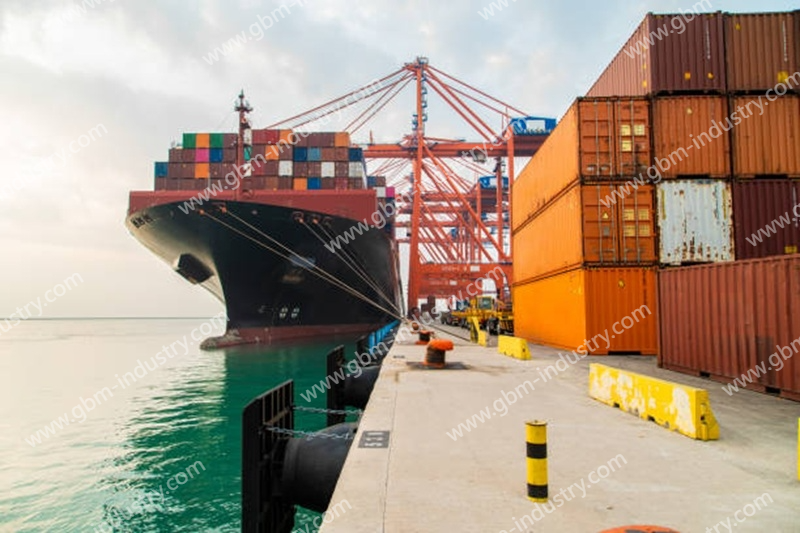
Ship Flexibility
Currently, the Panama Canal has a water depth of 13.0–15.0 meters, allowing the passage of vessels up to 5,000 TEU in size. After the expansion project is completed in 2014, the water depth will reach 18.0 meters, enabling 12,000 TEU container ships to pass through. The Suez Canal has a maximum water depth of 18.9 meters, allowing the passage of vessels up to 12,500 TEU in size. The maximum water depth of the Malacca Strait is 21.0 meters, with the largest vessel type permitted being 18,000 TEU. As such, the larger the vessel, the higher the requirements for ports and waterways, and the lower the flexibility. For example, future 18,000 TEU container ships will only be able to operate on the Asia-Europe route, and if cargo supply is insufficient, this will cause significant losses for shipping companies.
Cargo Supply
The trend toward larger vessels has increased the pressure on shipping companies to secure cargo, especially during off-peak seasons. Insufficient cargo supply may force shipping companies to resort to unhealthy competitive practices such as lowering prices, which is detrimental to the overall development of the shipping industry.
Containers
As vessels continue to grow in size, shipping companies’ demand for container equipment also increases. Generally, container ships require a container capacity equivalent to three times their cargo hold capacity to operate normally. Taking the Asia-Europe route as an example, eight 5,000 TEU container ships require 50,000 TEU containers, while eight 10,000 TEU container ships require 100,000 TEU containers, significantly increasing shipping companies’ container management costs. To alleviate the shortage of containers, shipping companies must implement effective measures, such as increasing the number of leased containers or reducing the turnaround time for empty containers.
Develop Container Handling Equipment to Trend Toward Larger Vessel
Facing the challenges posed by the increasing size of container ships—particularly the higher demands on port handling efficiency, gantry crane performance, and shipping companies’ per-container operational costs—GBM, as an innovative leader in port handling equipment, has focused its R&D efforts on developing the next generation of efficient, intelligent, and energy-saving container spreaders.
The aim is to provide critical technical solutions for ports and shipping companies, helping them seize the opportunities presented by vessel enlargement while effectively mitigating risks.
The core design advantages of GBM’s container spreaders are highlighted in the following key points:
Maximizing Efficiency To challenges of Handling Large Vessel
Large gantry cranes have wide spans and long spreader travel paths. The swaying of spreaders and containers during high-speed operation significantly impacts positioning accuracy and operational rhythm. GBM spreaders are equipped with an advanced intelligent anti-swing control system, which drives micro-motion mechanisms on the spreader to actively counteract swaying, enabling containers to be placed “steadily, accurately, and quickly.” This not only reduces time wasted on repeated position adjustments, improves overall operational smoothness, but also significantly reduces collision risks, ensuring operational safety.
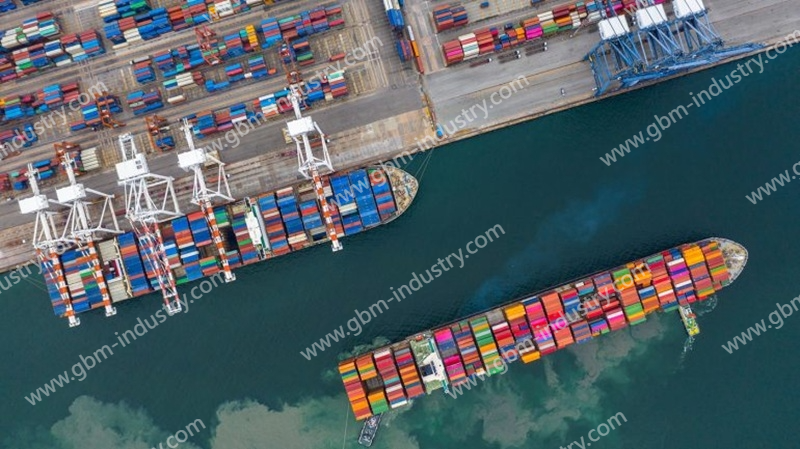
Energy-Saving Design, Reduce Operational Costs
Lightweight structure and efficient drive: The GBM crane hook uses high-strength alloy materials and optimized structural design to achieve significant lightweighting of the crane hook body while ensuring load-bearing capacity and durability. A lighter crane means the gantry crane’s hoisting mechanism needs to overcome less inertia, directly reducing energy consumption during the lifting process. Additionally, the internal drive mechanisms (such as rotary locks and guide plates) use high-efficiency motors and optimized transmission systems to minimize unnecessary energy consumption.
Meet Complex Operational Requirements
Modular design and high reliability: Given the high intensity and continuous nature of large-vessel loading and unloading operations, GBM crane hooks adopt a modular design philosophy, with key components easy to maintain and replace. They also use high-durability materials and protection ratings for harsh environments (such as salt fog and dust resistance), maximizing equipment availability, reducing downtime due to failures, and ensuring the efficient and stable operation of port loading and unloading lines to meet shipping companies’ urgent demand for rapid turnover.
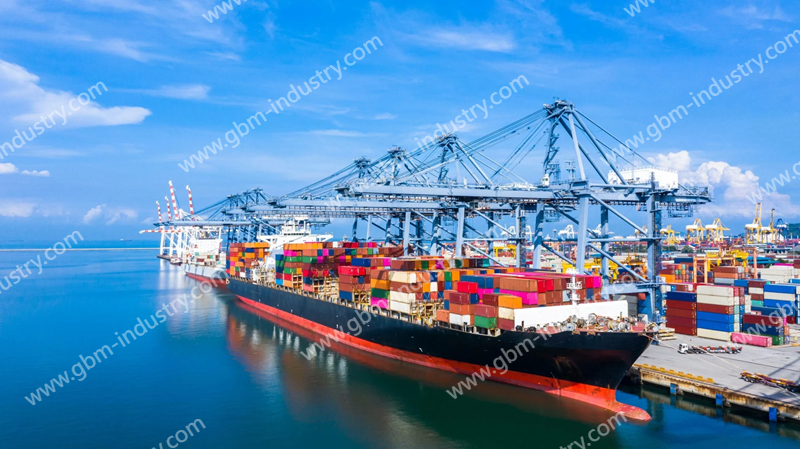
Conclusion
With the rapid development of international trade transportation, the trend toward larger container ships is inevitable. While ship enlargement can reduce per-container operational costs and enhance shipping companies’ competitiveness, it also presents new challenges for the shipping industry. Therefore, ports and shipping companies should evaluate the benefits and drawbacks from the perspective of the entire transportation system and implement corresponding strategies to maximize the economic benefits of ship enlargement.



